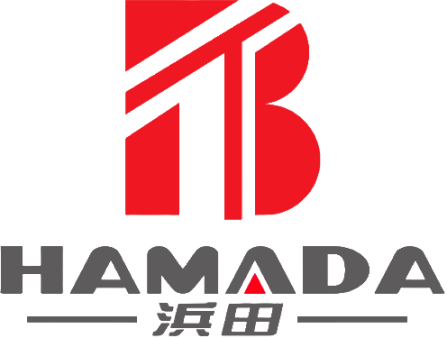What Is a Harmonic Drive Actuator?
What Is a Harmonic Drive Actuator
As industries continue to evolve towards automation and precision engineering, the demand for high-performance actuators has skyrocketed. Among the many types of actuators used in robotics, aerospace, and industrial machinery, the harmonic drive actuator has gained significant attention for its unique advantages in torque transmission and space efficiency. But what exactly is a harmonic drive actuator, and why is it becoming so crucial in modern engineering?
A harmonic drive actuator is a specialized type of gear mechanism used to convert rotational motion into precise, high-torque output with minimal backlash. At its core, the harmonic drive actuator combines a flexible spline, a circular spline, and a wave generator—three key components that work together to create highly accurate and efficient motion. This design allows the actuator to deliver high torque in a compact form, making it ideal for applications where space is limited but high precision is required.
What sets harmonic drive actuators apart from traditional gear systems is their ability to achieve very high reduction ratios (sometimes up to 160:1 or higher) in a single stage. This means that they can significantly reduce the input speed while multiplying the output torque, all within a relatively small footprint. The result is an actuator that is capable of driving heavy loads with exceptional accuracy and minimal size, which is essential in applications like robotics, aerospace, and medical devices.
One of the key benefits of harmonic drive actuators is their zero backlash design. Unlike traditional gears that can suffer from slight imperfections or gaps, leading to a loss of precision, harmonic drives virtually eliminate this problem. This characteristic makes them particularly useful in robotics, where even the smallest misalignment or deviation can lead to malfunction or errors in movement. In high-precision environments like surgical robots, this type of actuator ensures that the movements are as accurate and smooth as possible, reducing the risk of operational failure.
Additionally, harmonic drive actuators are highly efficient in energy transmission. They experience very little power loss due to their unique gearing system, making them an energy-efficient choice for both low- and high-speed applications. Their compact nature and reduced weight also contribute to overall energy savings, especially in mobile applications like drones or electric vehicles, where weight reduction is crucial for performance.
In industries like aerospace, harmonic drive actuators are often used in satellite systems, robotic arms, and landing gear mechanisms, where space constraints and reliability are paramount. Their ability to deliver precise, high-torque motion without requiring excessive space makes them an invaluable component in these sectors. In robotics, they enable more agile and responsive machines, whether for manufacturing, inspection, or healthcare applications.
Overall, harmonic drive actuators are redefining precision engineering by offering high torque, compact size, and nearly frictionless movement—all while maintaining reliability and efficiency. As industries continue to push the boundaries of what’s possible with automation and robotics, harmonic drive actuators are likely to play an even more pivotal role in shaping the future of technology.
 English
English Español
Español Português
Português русский
русский français
français 日本語
日本語 Deutsch
Deutsch Tiếng Việt
Tiếng Việt Italiano
Italiano Nederlands
Nederlands ไทย
ไทย Polski
Polski 한국어
한국어 Svenska
Svenska magyar
magyar Malay
Malay বাংলা
বাংলা Dansk
Dansk Suomi
Suomi हिन्दी
हिन्दी Pilipino
Pilipino Türk
Türk Gaeilge
Gaeilge عربى
عربى Indonesia
Indonesia norsk
norsk اردو
اردو čeština
čeština Ελληνικά
Ελληνικά Українська
Українська Javanese
Javanese فارسی
فارسی தமிழ்
தமிழ் తెలుగు
తెలుగు नेपाली
नेपाली Burmese
Burmese български
български ລາວ
ລາວ Latine
Latine Қазақ
Қазақ Euskal
Euskal Azərbaycan
Azərbaycan slovenský
slovenský Македонски
Македонски Lietuvos
Lietuvos Eesti Keel
Eesti Keel Română
Română Slovenski
Slovenski मराठी
मराठी Српски
Српски
Application and Exhibition of Harmonic's HMA Motors in Semiconductor Cleaning Equipment
Harmonic's HMA motors, with their superior performance, have become indispensable precision power sources in semiconductor cleaning equipment. During the cleaning and drying process, HMA motors (such as the HMAB12) deliver stable output speeds up to 4800 rpm, ensuring uniform drying of wafers during high-speed rotation and preventing residual droplets from impacting subsequent processes.
Read MoreAnalysis of Harmonic Drive Harmonic Drive Gearbox Applications in the Global Semiconductor Cleaning Equipment Market
In the semiconductor manufacturing industry, cleaning equipment, as a critical link in wafer processing, places extremely stringent requirements on the precision and reliability of its transmission systems.
Read MoreHigh-Precision Applications of Harmonic Drive Harmonic Gear Reducers in Semiconductor Polishing Equipment
In the front-end processes of semiconductor manufacturing, chemical mechanical planarization (CMP) polishing equipment places extremely stringent requirements on the precision and reliability of transmission components.
Read More